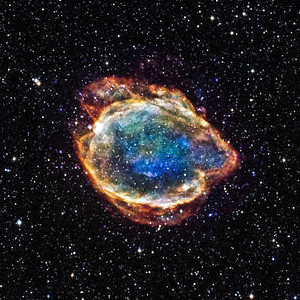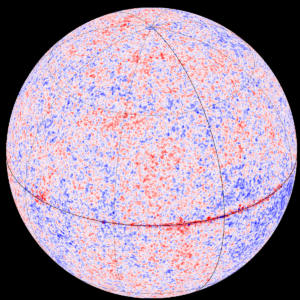Cosmology
Cosmology
The experimental cosmology program at Berkeley Lab, in partnership with the UC Berkeley cosmology group, forms one of the leading centers for cosmological studies in the world.
Our Type Ia SNe research program discovered dark energy in the late 1990s and continues to study SNe from ground- and space-based telescopes to improve the measurement of dark energy and extend it to higher redshifts. Over the next decade, we will be developing a program using the Large Synoptic Survey Telescope (LSST) to identify SNe that can be subsequently observed with other telescopes in order to obtain spectroscopic typing and redshifts. The spectroscopic follow-up will provide a well-calibrated, precision sample for probing dark energy.
Berkeley Lab’s role in charting the large-scale structure of the universe goes back to 2007, when we led an instrument upgrade of the Sloan Digital Sky Survey. The BOSS survey was conducted on this platform, establishing baryon acoustic oscillations (BAO) as a precision technique for measuring dark energy. Our current focus is on completing the construction of the Dark Energy Spectroscopic Instrument (DESI), a Stage IV BAO experiment to create the largest 3D map of the universe, with over 30 million galaxies. DESI is installed on the Mayall telescope at Kitt Peak, Arizona, and began its five-year survey in 2020.
The Berkeley Lab cosmic microwave background (CMB) research program has a long history of foundational advancements, from leading the first measurements of CMB anisotropies in the 1990s to its role and focus today as the lead laboratory for CMB-S4. With arrays of ground based large- and small-aperture telescopes surveying the sky with hundreds of thousands of cryogenically-cooled superconducting detectors, CMB-S4 will deliver transformative discoveries in fundamental physics, cosmology, astrophysics, and astronomy. We are also key contributors to several ongoing and cutting-edge experiments, including the Simons Observatory and the BICEP/Keck Arrays, as part of the effort to inform the design and strategy of CMB-S4. The Berkeley Lab CMB effort is a phased program that will extend well through the next decade, leveraging our group’s broad range of expertise in instrumentation, theory, simulation, and data analysis.


